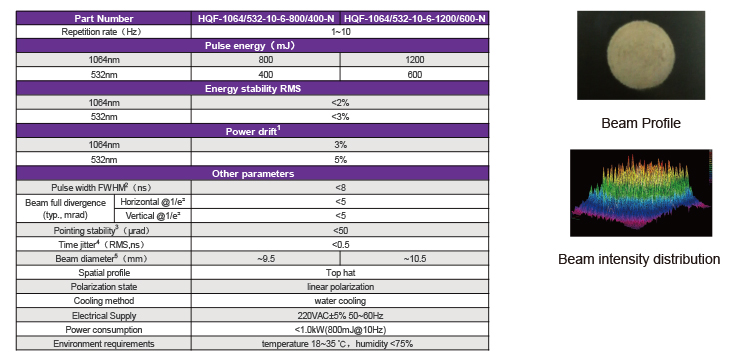Application of Nanosecond Solid-State Lasers in the Medical Aesthetic Industry
Working Principle
A nanosecond laser generates laser pulses with durations on the nanosecond scale. Although extremely short, these pulses deliver highly concentrated and intense energy. When such laser pulses interact with the skin, they rapidly penetrate the superficial layers and convert light energy into thermal energy. This process activates the repair and regeneration mechanisms of the dermis. The thermal effect not only stimulates collagen production to improve skin elasticity but also effectively breaks down and metabolizes pigment particles in the skin, achieving outcomes such as whitening and pigmentation removal. As shown in the figure below, RealLight‘s nanosecond laser specifications meet industry technical standards.

Nanosecond solid-state lasers, with their nanosecond pulse width and high-energy characteristics, achieve precise treatment and skin tissue repair in the field of medical aesthetics. The following are detailed application scenarios and technical comparisons:
1, Treatment of pigmentary diseases
Spot removal
Through selective photothermal action at a wavelength of 1064nm/532nm, melanin particles (such as freckles and melasma) from the epidermis to the dermis layer are instantly blasted. After treatment, pigment fragments are metabolized and eliminated, significantly improving uneven skin tone.
Tattoo removal
Traditional nanosecond Q-switched lasers (such as Q-switched Nd) decompose tattoo dye particles through photothermal expansion effect, but have low removal efficiency for complex colored tattoos and require multiple treatments. Compared to picosecond lasers, nanosecond lasers have a longer duration of action, larger particle sizes for pigment fragmentation, and longer metabolic cycles.
2, Treatment of vascular diseases
Red blood filament closure
By using a 532nm wavelength to accurately target hemoglobin and block abnormally dilated capillaries, symptoms such as facial flushing and rosacea can be improved. After treatment, there are no wounds and the recovery period is shortened by 38%.
Dilation of hemangioma
High energy nanosecond pulses can penetrate the vascular network of the dermis layer, reducing the volume of vascular tumors and minimizing skin erythema through thermal coagulation.
3, Skin repair and regeneration
Scar repair
Stimulate the regeneration of collagen in the dermis, soften hypertrophic scars such as acne scars and surgical scars, and promote the smooth and elastic recovery of the epidermis.
Skin rejuvenation
Activating fibroblasts through thermal effects, accelerating metabolism and microcirculation, improving wrinkles, enlarged pores, and skin sagging, achieving a tightening and lifting effect.
Disclaimer: Some content in this article is sourced from the internet for technical research and discussion purposes. It is intended for reference and learning only. Please kindly point out any inaccuracies. For copyright concerns, contact us for verification and removal.


